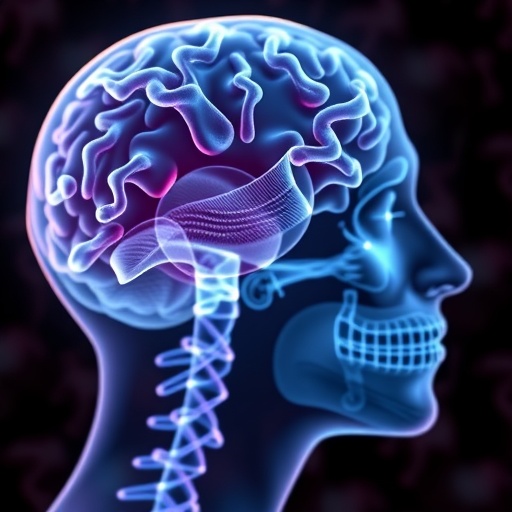
In a groundbreaking advancement for Parkinson’s disease therapy, researchers have reported the results of a first-in-human Phase I/II clinical trial using induced pluripotent stem cell (iPSC)-derived dopaminergic neurons. The study marks a pivotal step toward developing a regenerative treatment aimed at restoring the degenerating dopaminergic system that underlies the motor symptoms characteristic of Parkinson’s disease. The trial meticulously evaluated the safety profile of the transplanted cells alongside immune-suppressive drug administration, offering new insights into cellular therapy tolerability and adverse event management.
The trial enrolled seven patients diagnosed with Parkinson’s disease, who received transplantation of iPSC-derived dopaminergic neurons. Over the course of observation, the patients were closely monitored for any adverse events (AEs), with a keen focus on the severity and potential link to either the transplantation procedure or the immunosuppressive regimen involving tacrolimus. Impressively, no serious adverse events that required hospitalization or resulted in mortality were reported, underscoring the initial safety of this novel intervention.
Despite the encouraging absence of severe complications, all seven participants experienced adverse events totaling 73 in number. The majority of these were classified as mild, comprising 72 instances, and only a single moderate event was noted—a case of dyskinesia. This high incidence of mild AEs may reflect the intensive monitoring and detailed reporting inherent in early-phase clinical trials, rather than overt treatment intolerance.
Notably, the most frequent adverse event reported was application site pruritus, occurring in four patients—equivalent to 57.1% of the cohort. These skin reactions were transient and aligned with common dermatologic responses to localized injections or immune modulation. Importantly, the spectrum of adverse events did not differ significantly between patients receiving low versus high doses of transplanted cells, suggesting no clear dose-dependent toxicity within the evaluated range.
Among the adverse reactions, only one was tentatively attributed to the cell transplantation itself: neck stiffness accompanied by painful dystonia in the right upper limb, manifesting during the “drug-on” state when dopaminergic medication is active. This isolated event may represent a focal motor disturbance related to localized graft effects or neuronal integration, warranting further mechanistic exploration.
Tacrolimus, the immunosuppressant employed to prevent graft rejection, was overall well tolerated. Nevertheless, it appeared to be associated with a subset of potential adverse effects in three patients—representing 42.9% of the trial population. These drug-related reactions encompassed a range of organ-specific disturbances, including hepatic impairment, elevations in gamma-glutamyltransferase (GGT) levels indicating liver stress, cystitis, nail dermatophytosis, and renal impairment.
The hepatic and renal impairments suggest that systemic immunosuppression, while necessary, introduces a degree of physiological burden, highlighting the delicate balance between graft tolerance and patient safety. These findings emphasize the need for rigorous monitoring and development of potentially less toxic or more targeted immunomodulatory approaches in future stem cell therapies.
This trial exemplifies the complex landscape of cellular transplantation in neurodegenerative disorders, where therapeutic promise must be continuously balanced against safety considerations. The mild and non-serious nature of most adverse events offers reassurance, but the presence of even moderate dyskinesia and instances of organ dysfunction underlines the importance of refining protocols to minimize patient risk.
The robustness of the findings is enhanced by the comprehensive evaluation of adverse events, which were systematically classified and their relationships to treatment scrutinized. This approach provides valuable data to inform subsequent trials aimed at optimizing cell dosage, delivery methods, and immunosuppressive strategies.
From a mechanistic perspective, the use of iPSC-derived dopaminergic neurons represents an elegant solution to a long-standing challenge in Parkinson’s therapeutics: replenishing lost neurons with patient-specific, functionally relevant cells. The trial’s results indicate that these cells can be transplanted safely, at least in the short term, setting a precedent for further clinical development.
The implications of successful engraftment and functional integration of iPSC-derived neurons extend beyond Parkinson’s disease, potentially revolutionizing treatment paradigms for a host of neurodegenerative and neurotraumatic conditions. The modulation of the immune environment, as illuminated by tacrolimus’s effects, will be a critical area of ongoing research.
Looking ahead, longer-term follow-up and larger-scale studies will be essential to validate efficacy outcomes and confirm durable safety. Additionally, innovations in cell engineering, delivery techniques, and immune modulation may enhance therapeutic impact while mitigating adverse effects.
This study’s transparent reporting and detailed adverse event profiling provide the scientific community and patients alike with tempered optimism about the future of stem cell therapies in neurological disease. It underscores the transformative potential of personalized, regenerative medicine when paired with meticulous clinical vigilance.
By advancing the frontier of iPSC-based therapies through rigorous clinical evaluation, this research brings renewed hope for those living with Parkinson’s disease, offering a potential route to not just symptom management, but neural restoration.
Subject of Research: Phase I/II clinical trial assessing the safety of iPSC-derived dopaminergic cell transplantation in Parkinson’s disease.
Article Title: Phase I/II trial of iPS-cell-derived dopaminergic cells for Parkinson’s disease.
Article References:
Sawamoto, N., Doi, D., Nakanishi, E. et al. Phase I/II trial of iPS-cell-derived dopaminergic cells for Parkinson’s disease. Nature (2025). https://doi.org/10.1038/s41586-025-08700-0
Image Credits: AI Generated
Tags: adverse events in clinical trialscellular therapy for neurodegenerative diseasesdopaminergic system restorationimmune-suppressive drug administrationiPSC-derived dopaminergic neuronsmild adverse events in Parkinson’s treatmentmonitoring patient outcomes in Parkinson’sParkinson’s disease clinical trialPhase I/II Parkinson’s trialregenerative therapy for Parkinson’ssafety profile of cell transplantationtacrolimus in transplantation





